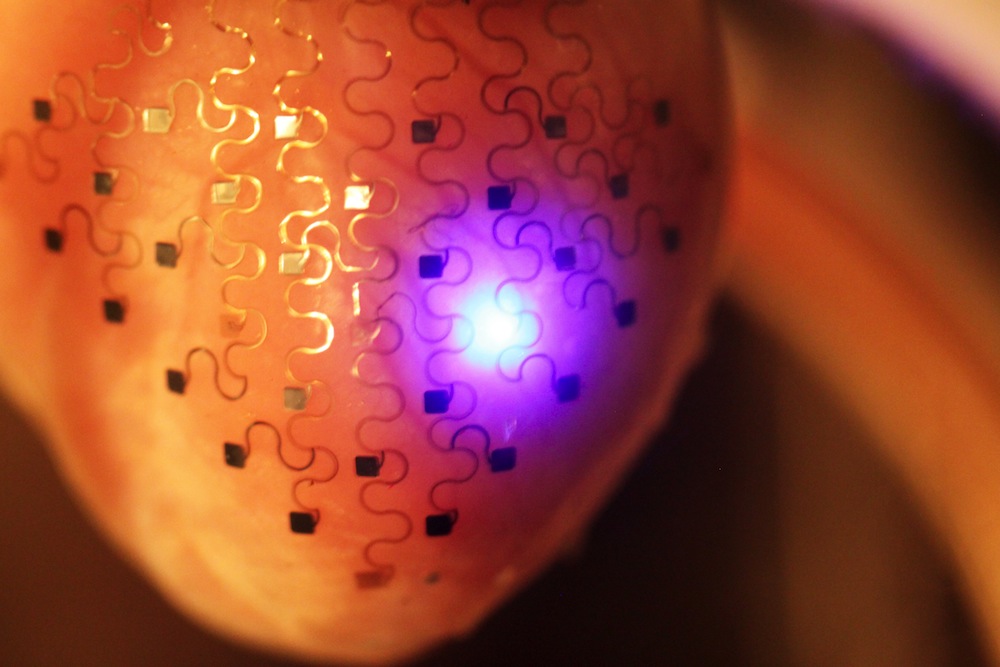
Using a 3D printer, scientists have made an elastic membrane that closely mimics the outer layer of the heart's wall.
The new membrane, which was described Tuesday (Feb. 25) in the journal Nature Communications, contains tiny sensors that can track the heart's temperature, pH and level of strain. The device could one day be used to treat patients with rhythm disorders in the lower chambers of the heart, as well as the rhythm disorder atrial fibrillation, the researchers said.
Heart rhythm irregularities are a common problem, with one of the most well-known forms, atrial fibrillation, affecting 3 million to 5 million people in the U.S. yearly. Left untreated, rhythm irregularities can cause blood clots, which can lead to stroke.
People with atrial fibrillation are often treated with blood thinners or other treatments that may ablate the heart's pacemaker cells and replace them with electrodes. But these techniques are fairly simplistic and don't provide much feedback on the heart's condition. [7 Cool Uses of 3D Printing in Medicine]
"Currently, medical devices to treat heart rhythm diseases are essentially based on two electrodes inserted through the veins and deployed inside the chambers," study co-author Igor Efimov, a biomedical engineer at Washington University in St. Louis, said in a statement.
Efimov and his colleagues used medical imaging to scan a rabbit heart, and then used 3D printing to create a model for the heart. From there, the team created a thin silicon sheath, embedded with tiny sensors, that fits over the outside of the heart perfectly. The team then tested the mechanical and electrical properties of the heart "jacket" as it contracted with rabbit hearts.
The sensor-filled heart sleeve could one day be used to not only test for heart disease, but also to track the health of other organs, such as the kidneys, the researchers said.
Sign up for the Live Science daily newsletter now
Get the world’s most fascinating discoveries delivered straight to your inbox.
"Because this is implantable, it will allow physicians to monitor vital functions in different organs and intervene when necessary to provide therapy," Efimov said. "In the case of heart rhythm disorders, it could be used to stimulate cardiac muscle or the brain, or in [kidney] disorders, it would monitor ionic concentrations of calcium, potassium and sodium."
In addition, the sensors could one day measure an enzyme called troponin, a telltale marker of heart attacks. That could help doctors detect heart troubles even earlier than current tests.
Follow Tia Ghose on Twitter and Google+. Follow Live Science @livescience, Facebook & Google+. Original article on Live Science.

Tia is the managing editor and was previously a senior writer for Live Science. Her work has appeared in Scientific American, Wired.com and other outlets. She holds a master's degree in bioengineering from the University of Washington, a graduate certificate in science writing from UC Santa Cruz and a bachelor's degree in mechanical engineering from the University of Texas at Austin. Tia was part of a team at the Milwaukee Journal Sentinel that published the Empty Cradles series on preterm births, which won multiple awards, including the 2012 Casey Medal for Meritorious Journalism.










